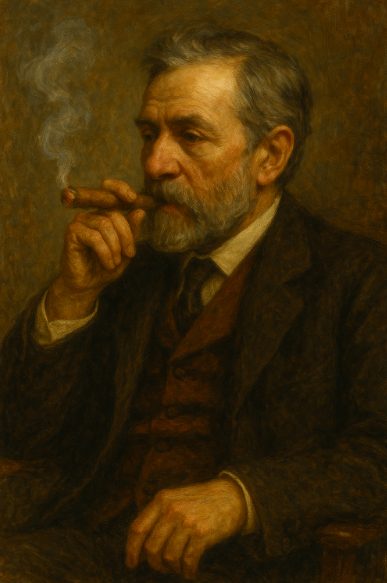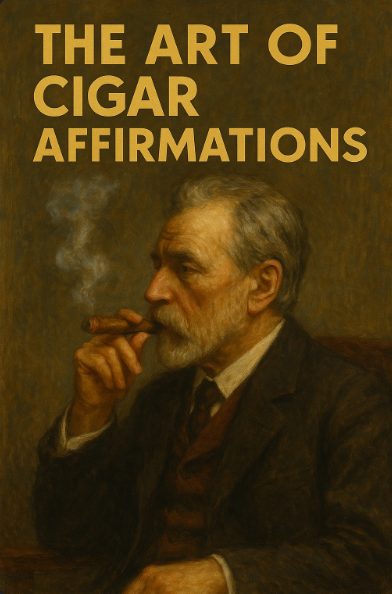Uncategorized
Cigars and Art: The Aesthetic of Tobacco
Throughout history, cigars have represented more than just a refined indulgence; they’ve become an enduring symbol of culture, status, rebellion, contemplation, and masculinity. As such, cigars have naturally found their way into countless works of art. From classical oil paintings to modern street photography, the aesthetic of tobacco has inspired generations of artists and photographers. This fusion of smoke and symbolism has helped define entire artistic movements and continues to captivate the eyes, hearts, and lenses of creators today.
In this blog post, we’ll examine the many ways cigars have influenced art, uncovering their visual appeal, symbolic depth, and cultural resonance from the Renaissance to the digital age.
I. The Cigar as a Muse: Historical Roots in Painting
Art has long captured the daily lives and habits of people, and smoking, especially cigar smoking, has been a recurring motif in works across centuries. In many classic and modern paintings, cigars appear not just as objects but as extensions of personality, tools of narrative, or even signifiers of deeper meanings.
A. 19th Century Realism and the Cigar
During the 19th century, as realism emerged as a dominant movement in European painting, artists sought to depict life as it truly was, gritty, beautiful, flawed, and profoundly human. The inclusion of a cigar in a portrait or scene became a subtle way to convey class, character, or profession.
Édouard Manet, for instance, often painted scenes of Parisian life in the 1860s, where men puffed on cigars in cafés and salons. The smoke trailing from the mouths of these men gave a sense of atmosphere, both literal and figurative, to his work. A cigar could indicate leisure or rebellion, depending on the subject and context.
B. The Impressionists and the Atmosphere of Smoke
The French Impressionists, including Claude Monet and Edgar Degas, were fascinated by light, motion, and transient moments. Smoke, especially cigar smoke, was often used as a device to capture the fleeting nature of time. Cigar smoke, curling and dissipating in soft light, helped build depth and emotion in a painting. In Degas’ numerous depictions of Parisian gentlemen, the ever-present cigars added to the urban ambiance.
C. Latin American and Caribbean Influences
In Cuba, cigars aren’t just a product; they’re a cultural artifact. Artists such as Wilfredo Lam, one of Cuba’s most renowned painters, incorporated symbols of Afro-Cuban heritage and tobacco farming into their surrealist compositions. The cigar and tobacco leaf are recurring icons in Latin American art, often representing resilience, pride, and national identity. Rural landscapes with tabaqueros (tobacco farmers) became an archetype of Cuban painting.
II. The Symbolism of the Cigar in Portraiture
One of the most potent ways cigars have been used in art is through portraiture. Whether in paintings or later in photography, cigars often serve as symbolic extensions of the subject.
A. Power and Prestige
Perhaps most famously, Winston Churchill, arguably one of the most painted and photographed cigar smokers in history used his ever-present cigar as part of his image. In both painted and photographic portraits, the cigar in his hand or mouth became a metaphor for strength, resilience, and command.
In aristocratic and industrial-era portraits, cigars were often depicted as status symbols, much like a top hat or a gold watch. To be painted with a cigar was to assert one’s position in society, one’s wealth, or one’s intellectualism.
B. Rebellion and Individuality
In the 20th century, artists and photographers began to use cigars as icons of rebellion or artistic spirit. Pablo Picasso, often seen with a cigarette or cigar, embodied the image of the bohemian artist. His presence in photos with a cigar in hand spoke to his nonconformity, creative energy, and layered personality.
Even in painted self-portraits by lesser-known artists, the inclusion of a cigar is often meant to show the subject as contemplative, fiery, or self-assured—an outsider thinking deeply while watching the world through a veil of smoke.
III. Cigars in Photography: From Black-and-White to High-Gloss
With the rise of photography in the late 19th and 20th centuries, the aesthetic power of cigars took on new life. Photographers quickly realized the visual drama cigars added to their compositions. The contrast between a solid cigar and its ephemeral smoke became a powerful visual element.
A. Black-and-White Photography
Classic black-and-white photography particularly benefits from the inclusion of cigars. The deep contrast between the lit end of a cigar, the contours of a face, and the swirling smoke makes for a compelling image. Iconic photographers like Alfred Eisenstaedt and Yousuf Karsh captured some of the most unforgettable portraits of cigar smokers.
One of the most famous examples is Karsh’s 1941 portrait of Winston Churchill. After yanking the cigar from Churchill’s mouth moments before the photo, Karsh captured a scowl that became iconic. The cigar, though missing, is forever implied; its absence actually enhances the subject’s personality.
Other notable examples include black-and-white portraits of Fidel Castro and Che Guevara, where the cigar becomes almost inseparable from their political personas. The cigar wasn’t just a prop; it was a part of their mythos.
B. Modern Photography and Fashion
As photography transitioned into the high-gloss editorial world, cigars continued to serve as a tool of aesthetic power. In fashion magazines, celebrity spreads, and luxury lifestyle shoots, cigars often appear to connote sophistication, danger, or cool detachment.
Cigar smoke adds texture and allure to an otherwise clean photo. Photographers like Annie Leibovitz have used cigars in their shoots to emphasize the swagger and sensuality of their subjects, whether male or female.
In commercial cigar photography, especially within the cigar industry today, product shots often mimic fine art. The texture of a tobacco leaf, the glint of an ornate band, and the curling tendrils of smoke all evoke intimacy, craftsmanship, and allure.
IV. Cigar Art as Subject: Still Life and Conceptual Art
While portraits and street photography often feature cigars incidentally or symbolically, many artists have made cigars the main subject of their work.
A. Still Life Traditions
Still, life as a genre has long featured cigars and cigar-related paraphernalia: ornate cutters, silver ashtrays, matches, humidors, and tobacco leaves. The inherent textures of these items. the rugged wrapper of a Maduro cigar, the polished wood of a humidor make them ideal subjects for artists looking to explore realism and tactility.
Modern still-life photographers and painters alike have embraced cigar imagery for its layered appeal: earthy, masculine, decadent, and timeless. A single cigar placed alongside a glass of whiskey, for instance, creates a story of leisure and introspection.

B. Conceptual and Pop Art
Contemporary artists have also begun to incorporate cigars into more conceptual works. Artists such as Tom Sachs and Damien Hirst have incorporated smoking objects into their installations and sculptures, examining themes of consumerism, mortality, and ritual.
In pop art, cigars appear as visual shorthand for luxury or vice. Artists who play with cultural symbols, such as Andy Warhol, recognized the cigar’s power as both a status symbol and a cultural icon.
Street artists and muralists today frequently depict iconic cigar smokers like Castro, Guevara, and Churchill, blending political commentary with visual boldness.
V. Cigars and Tattoo Art
In the world of body art, cigars also maintain a firm grip. Tattoo artists frequently incorporate cigars into portraits, skull designs, or thematic sleeves. A skull puffing on a cigar may represent rebellion, a memento mori, or an homage to classic outlaw culture.
Cigar band tattoos, especially of rare or limited-edition releases have become a way for devoted cigar aficionados to mark their loyalty to the hobby permanently. Much like fine art collectors, tattooed smokers wear their passions on their sleeves—literally.
VI. The Role of Cigars in Artistic Identity
For many creators, including writers, painters, and musicians, the act of smoking a cigar is an integral part of their creative ritual. It represents a pause in the chaos, a moment of reflection, or an intimate part of their process.
Think of Mark Twain, who was rarely seen without a cigar. He smoked as he wrote, smoked as he spoke, and let his cigar punctuate his thoughts. Artists often refer to this ritualistic side of cigar smoking as part of their “aesthetic engine”, a moment of internal quiet that fuels external creativity.
In film and photography, capturing an artist with a cigar reinforces this mystique. Whether it’s Hemingway at his desk or a blues guitarist on a smoky porch, the image tells a story before a word is spoken or a note is played.
VII. Conclusion: Smoke as Medium, Cigar as Message
Cigars have transcended their original purpose as mere objects of consumption. Over time, they have become embedded in the language of art. They speak to ideas of power, tradition, rebellion, luxury, mortality, and expression.
From classical paintings to edgy modern photo spreads, the cigar continues to occupy a unique aesthetic niche, one that no vape pen or filtered cigarette can replicate. The visual and symbolic weight of a cigar remains unmatched in its richness.
As long as artists continue to find beauty in texture, mood in smoke, and stories in symbols, the cigar will remain a timeless muse in the gallery of human creativity.

